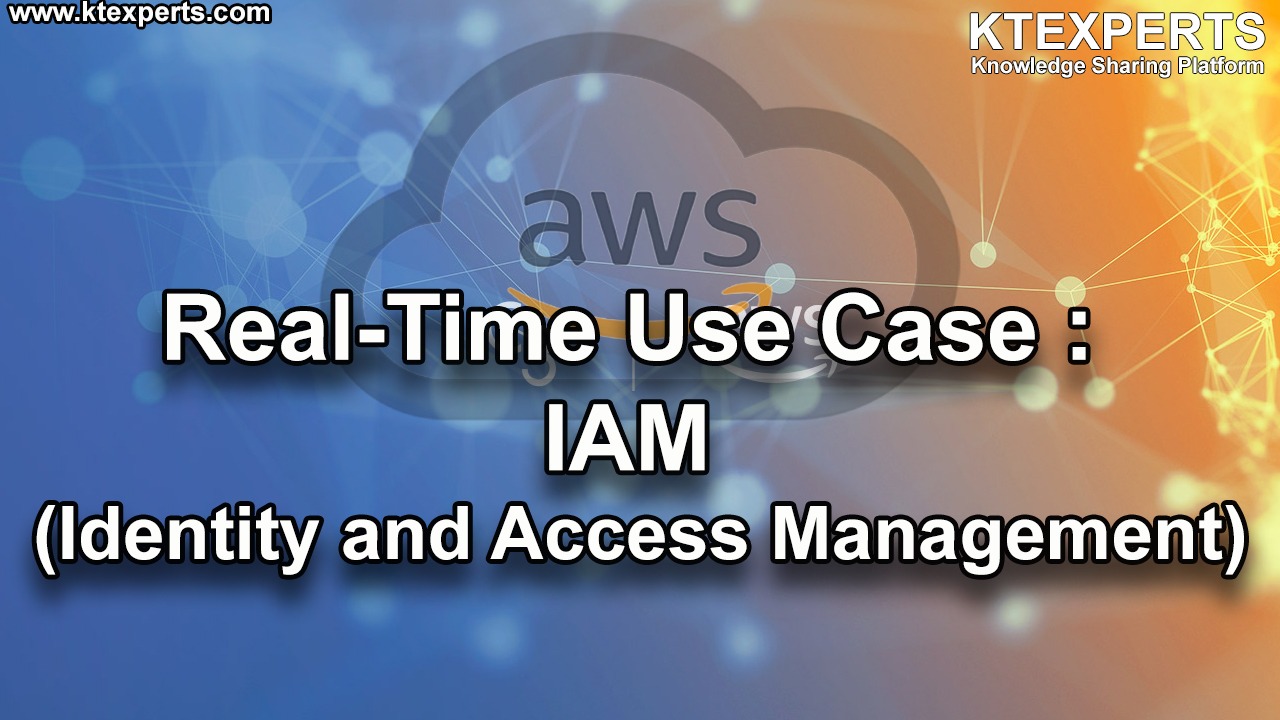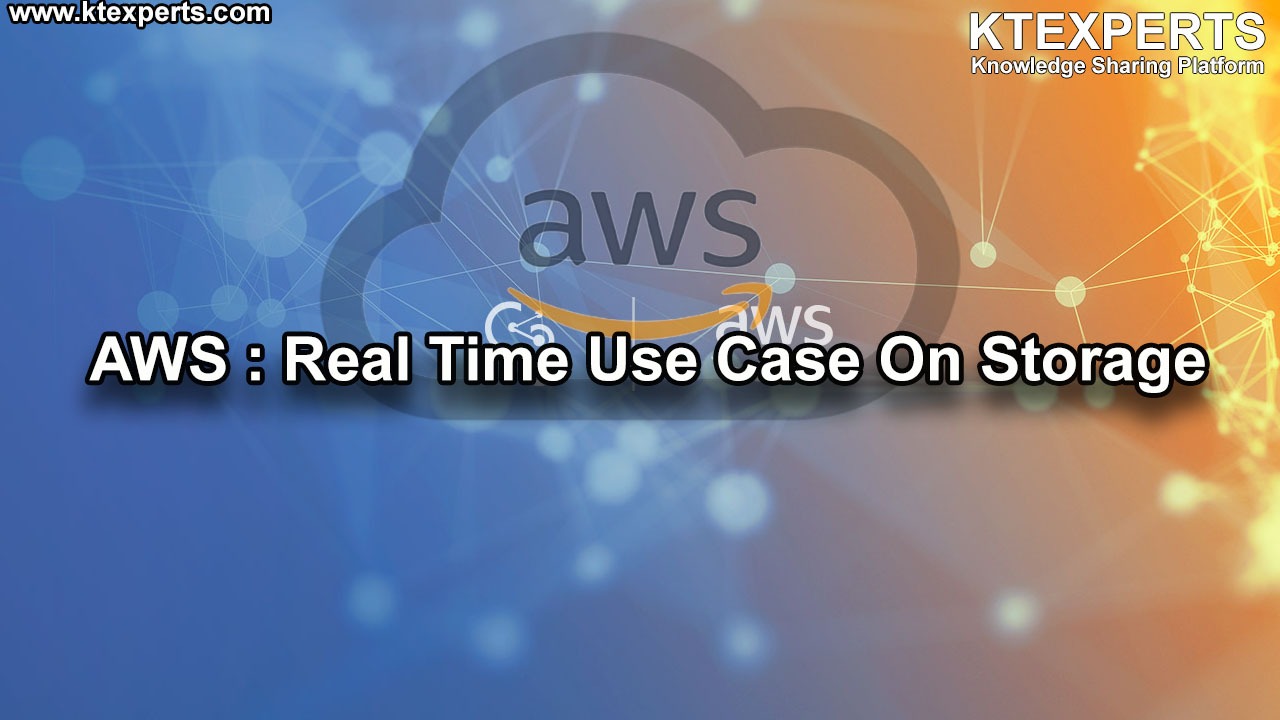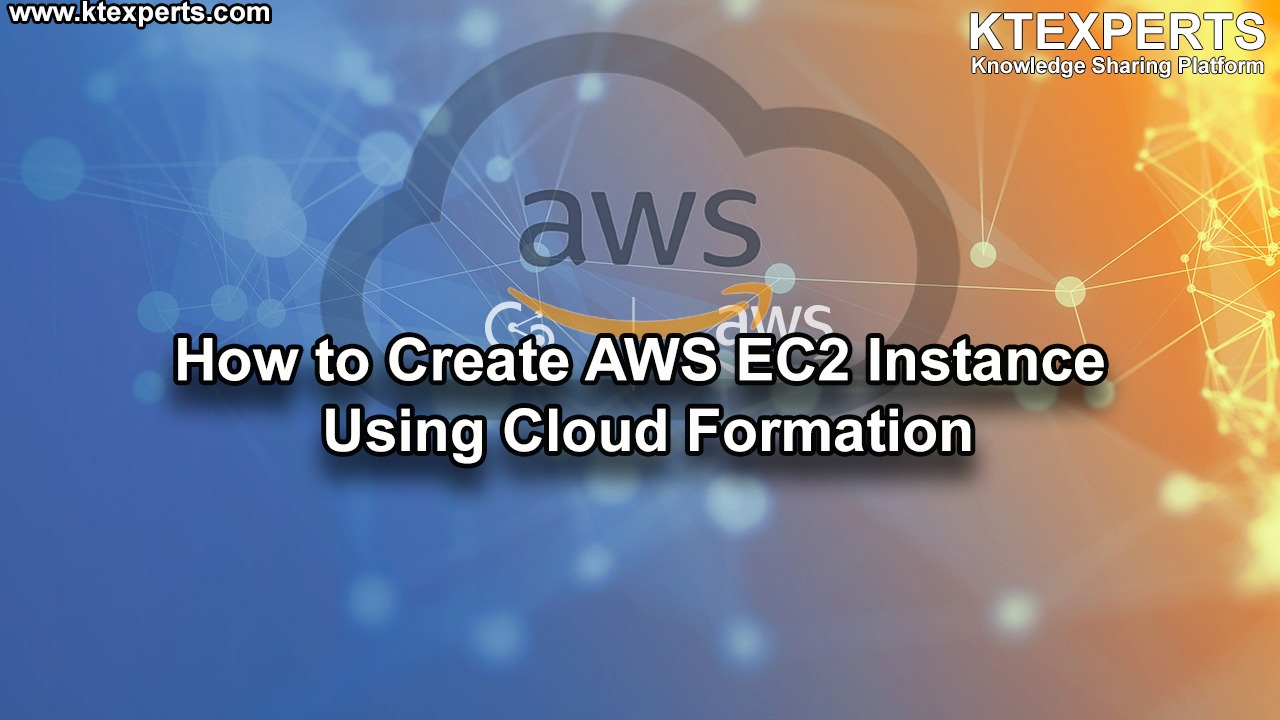Dear Readers,
In this article,we will see Create EBS Volume Snapshot and Attached to Another EC2 Instance.

Implementation Steps
- Launch Linux EC2 Instance.
- Connect to Linux EC2 Instance through putty.
- Mount an EBS Volume to your Linux EC2 Instance.
- Create Snapshot from EBS Volume.
- Create Volume from Create Snapshot.
- Launch Another Linux EC2 Instance.
- Attach EBS Volume to your Another Linux EC2 Instance “My Linux 1”.
- Connect to Second Linux EC2 Instance through putty and verify files.
First, we need to AWS Console page by using below link.
https://aws.amazon.com/console/
Click on sign in to Console button.

Logging to aws account
Login using username & password and click on sign in.
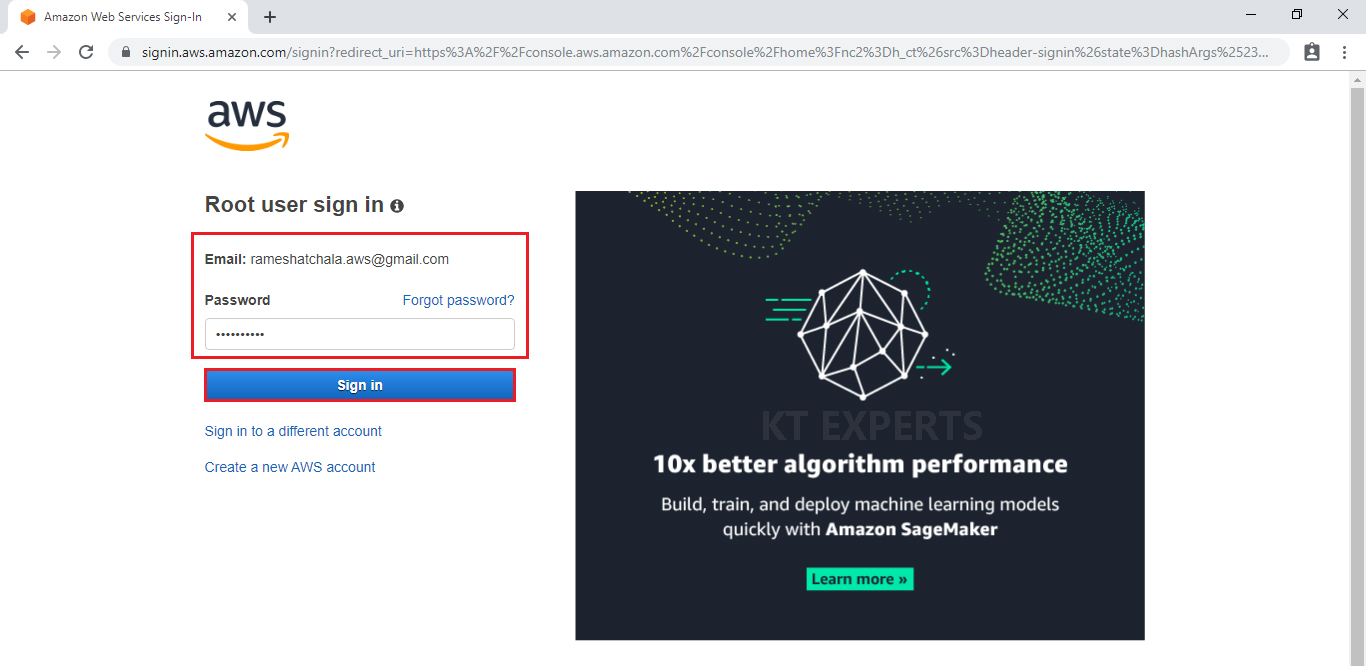
Enter to AWS Management Console
We can see the AWS Management Console Dashboard.
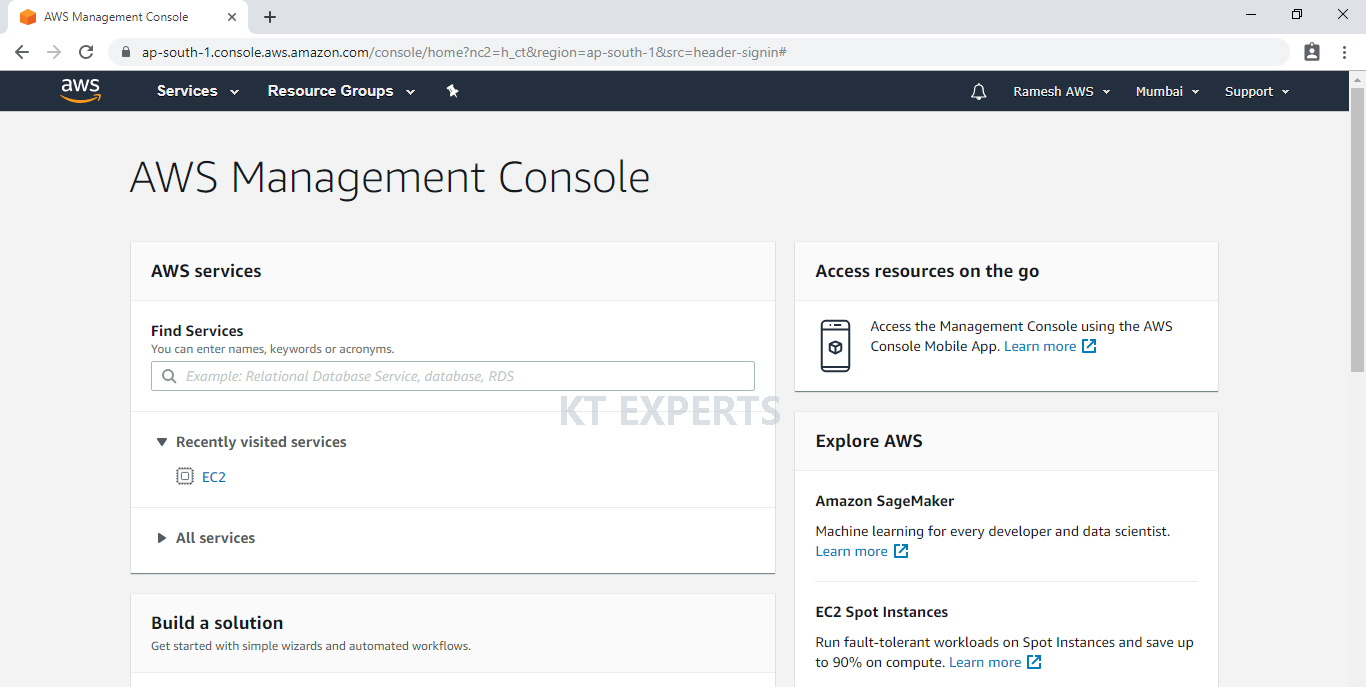
Go to Services, under the compute module click EC2 service to open.

Launch Linux EC2 Instance
Go to Instances and click on Launch Instance.

Choose an Amazon Machine Image (AMI)
Select the Operating system of the EC2 instance by choosing any of the Amazon Machine Images (AMI). Select the Microsoft Amazon Linux AMI.

Choose an Instance type
Choose the Type of instance depending on your requirements.
Instance types comprise of varying combinations of CPU, memory, storage, and networking capacity.
select the default option of t2.micro – this instance type is covered within the free tier. Then click on Configure Instance Details.

Configure Instance Details
Configure EC2 instance details as per requirements of your environment and click on Add Storage.

Add Storage
Here, we can see root volume by default and size of 8GB
Add a new volume “EBS” and the size is 10GB.
Click on Add Tags.
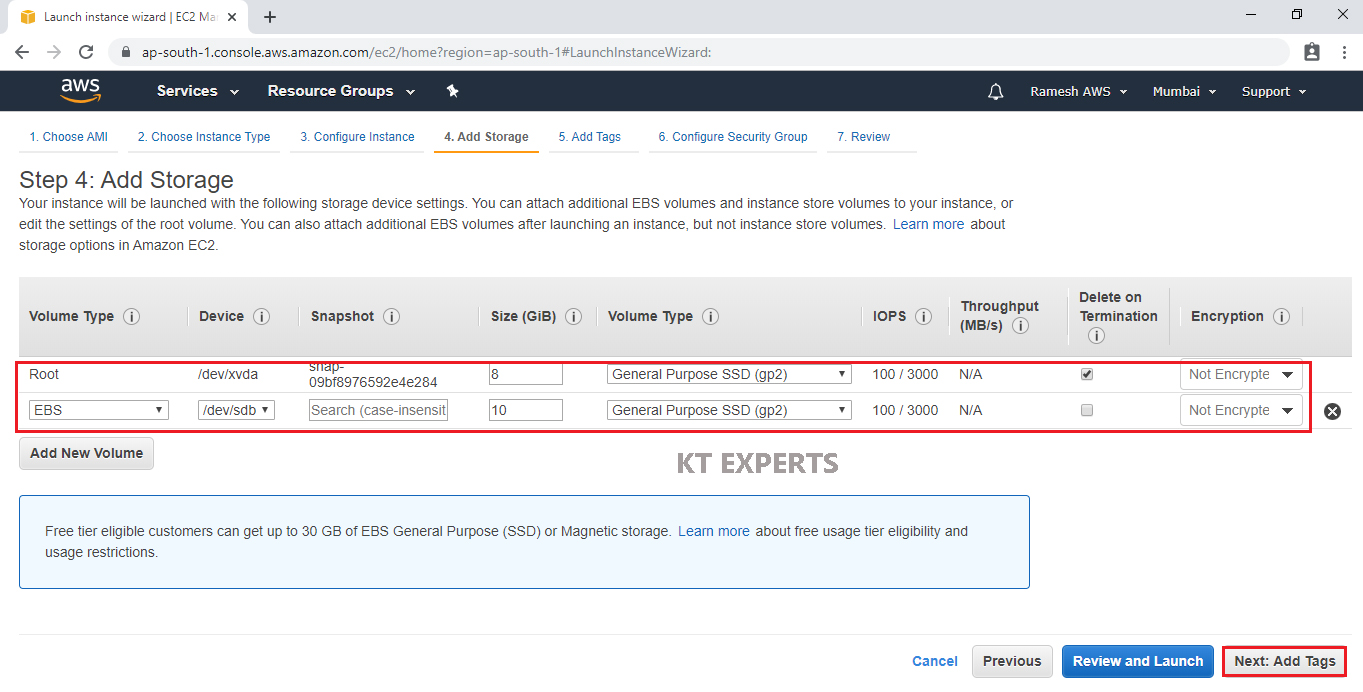
Add Tags
Tags assist in easier identification and classification of the various instances in your AWS environment.
Click on click to add a Name tag to provide name for our server.

Provide the name for the Linux virtual machine for easier understanding and click on Configure Security Groups.

Configure Security Group
A security group allows configuring firewall rules to allow traffic as needed. Only one rule has been added to allow remote connection.
SSH Is enough to connect to our Linux virtual server and click on Review and Launch.
SSH – Secure Shell

Review Instance Launch
Review and confirm the configuration of the instance. Click on the Edit button on each configuration item to make changes and click on Launch.
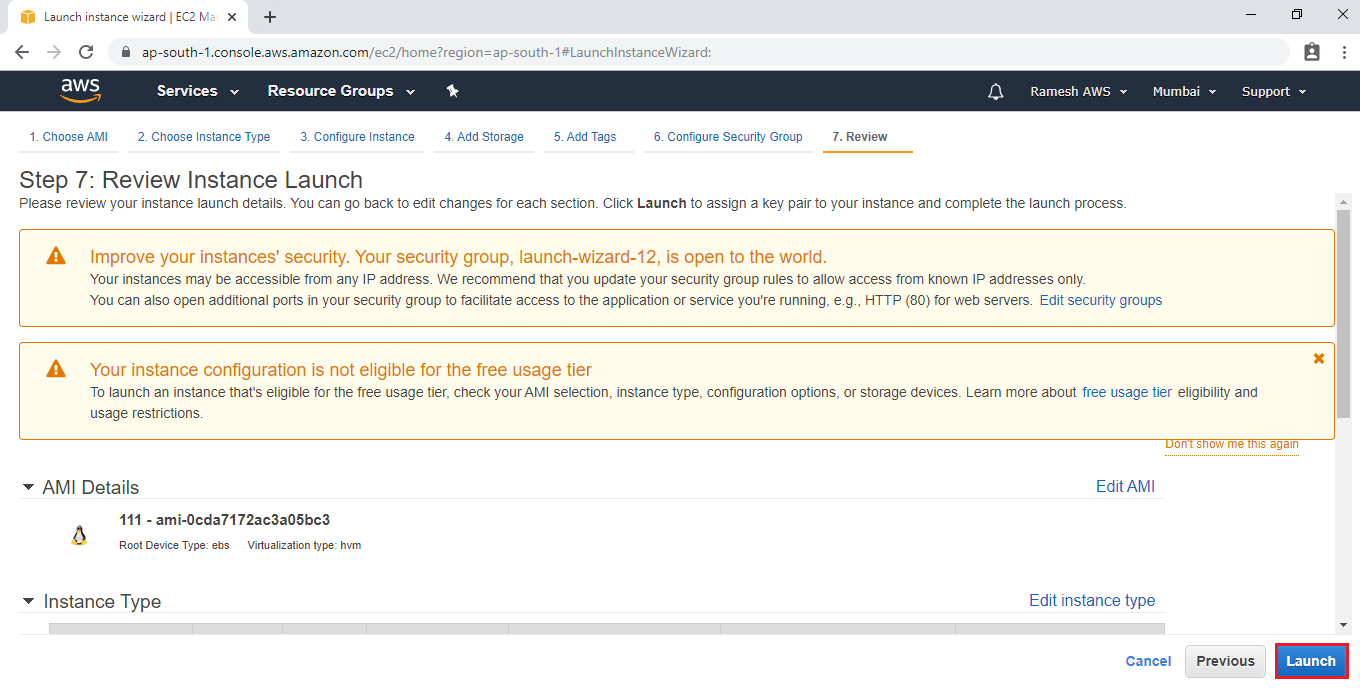
Select an existing key pair a Key Pair and Launch Your Instance
To connect to your virtual machine, you need a key pair. A key pair is used to log into your instance and Select an existing security group and click on Review and Launch.
Click on Launch Instance to start your Linux Server instance.
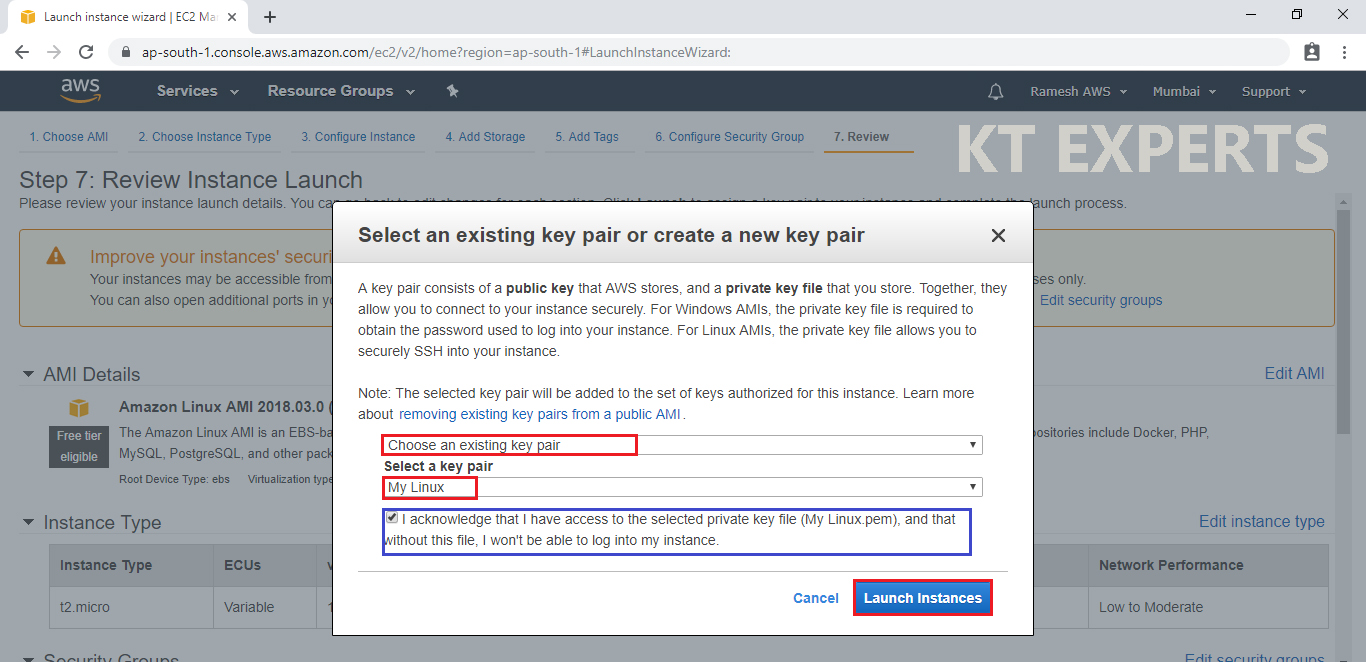
click on View Instances to view the instance you have just created and see its status.

We can see Linux Server which was created earlier.
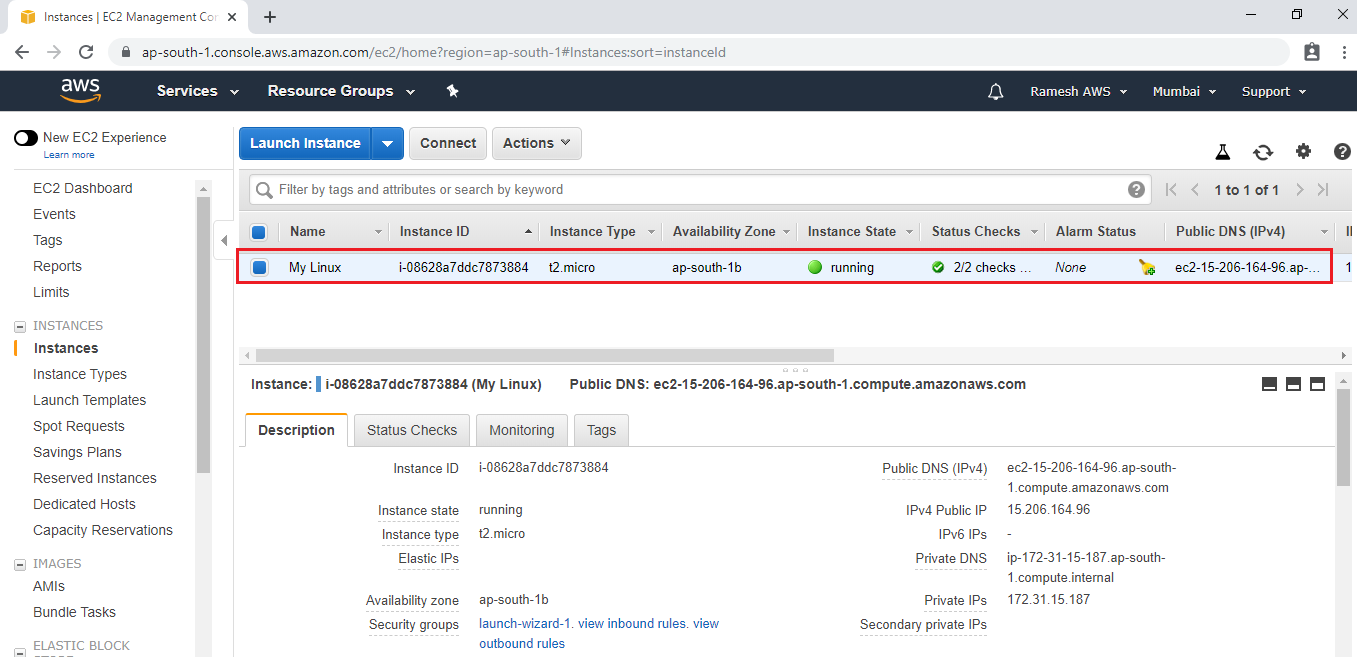
Verify volumes of your Linux EC2 Instance.
Go volumes,we can see two volumes attached to Linux EC2 Instance.
The first one is root volume and second one is EBS volume.
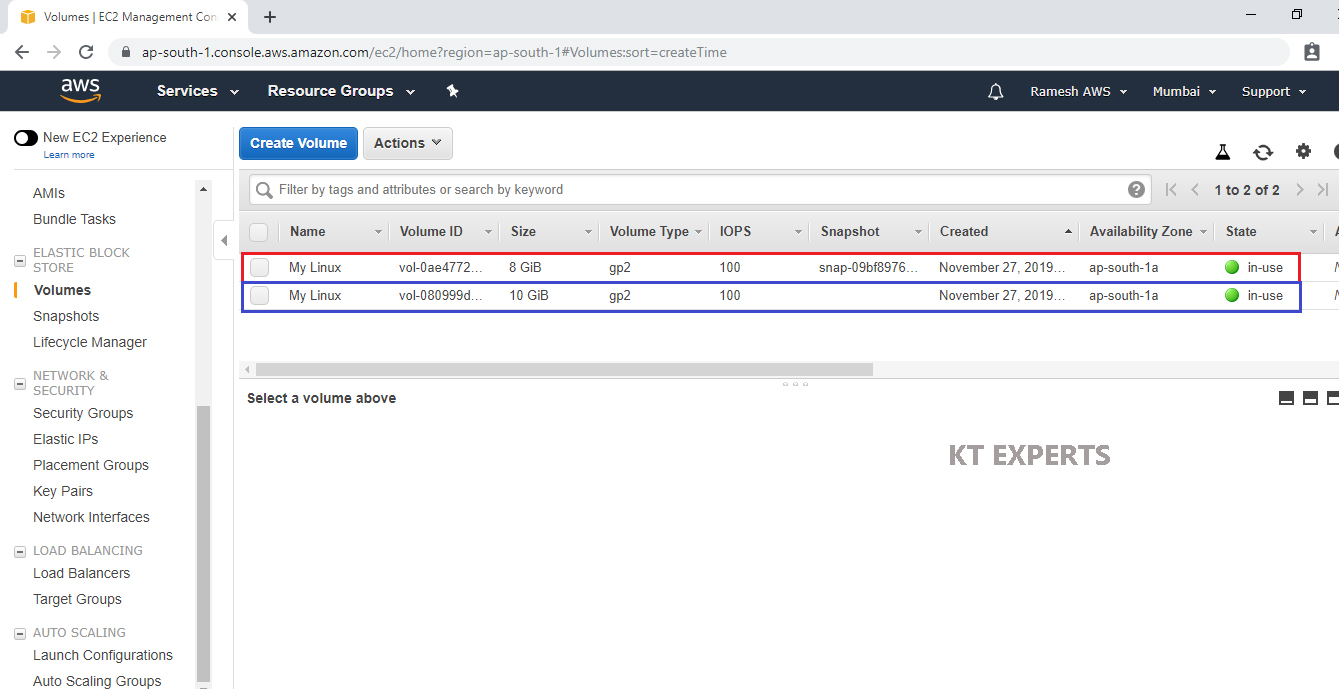
Note
If you want to store the files inside the EBS volume, you need to mount EBS volume to your Linux EC2 Instance.Manually.
Connect to Linux EC2 Instance through putty.

Mount an EBS Volume to your Linux EC2 Instance.
Switch to root user
Verify Available disks in your Linux Server
Verify the volume has any data by using the following command.
Format the volume to ext4 filesystem
Create a directory to mount our new ext4 volume (use any directory name you like)
Make Directory
Mount the volume to “ktexperts” directory
Verify the disk space in your Linux Server
Go to Mount Directory and verify files.
Make Files and Directories inside mount directory
EBS Automount on Reboot
By default on every reboot the EBS volumes other than root volume will get unmounted.
To enable automount, you need to make an entry in the /etc/fstab file
Execute the following command to check id the fstab file has any error
Create Snapshot from EBS Volume
Go to Volumes,
Select your EBS Volume “My Linux” and click on Create Snapshot in the Actions.

Specify Description and value for the snapshot then click on Create Snapshot.
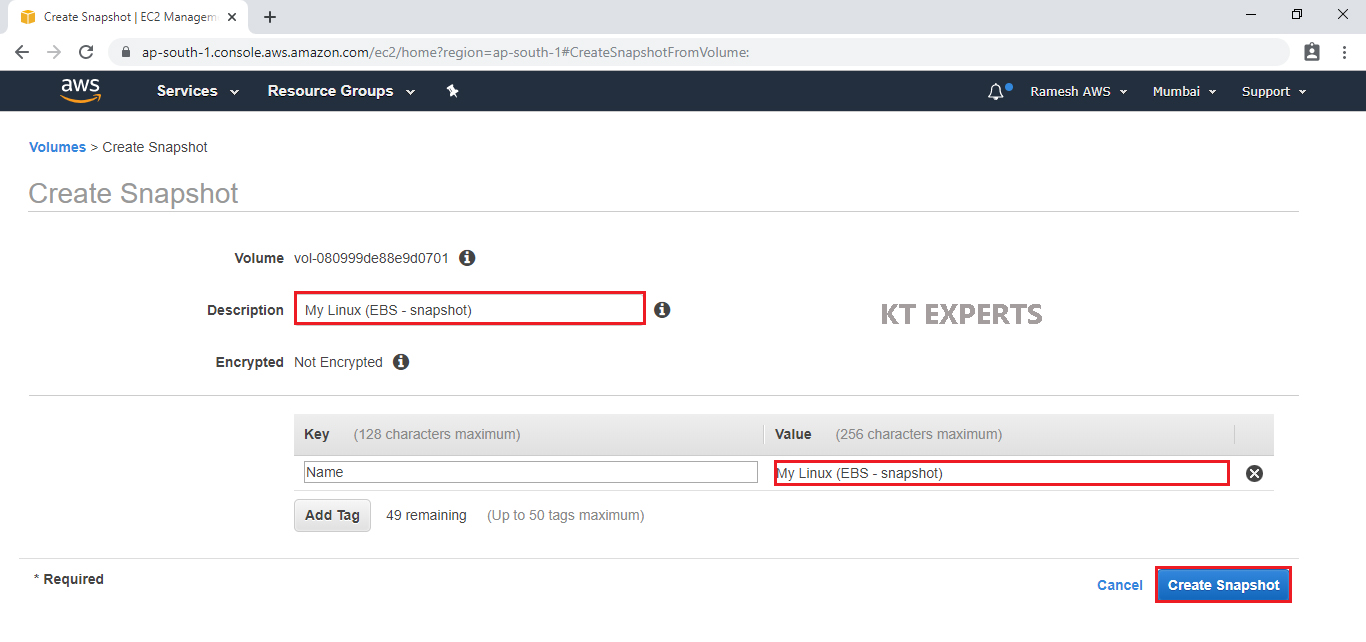
Create Snapshot Request Succeeded and Click on Close.

Go to snapshots, we can see The snapshot has been created.
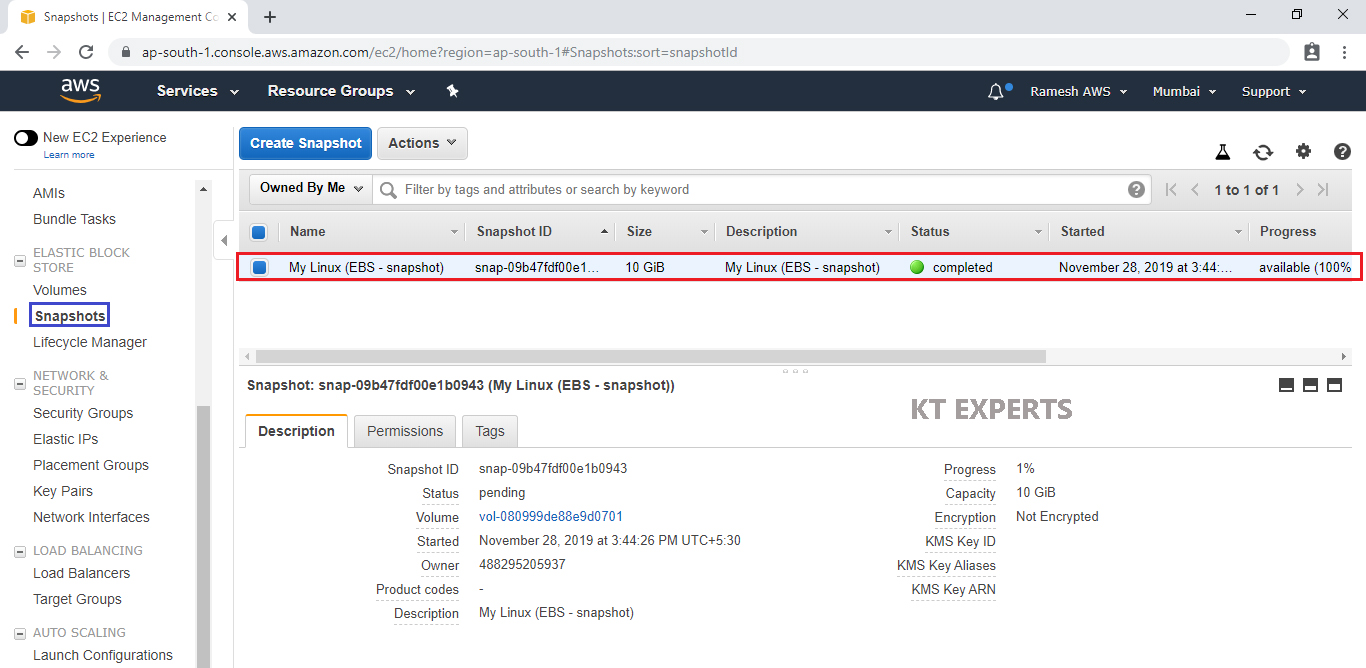
Create Volume from Snapshot
Before creating a volume we should know the Availability Zone of your Linux EC2 Instance.
Go to Instances,
Here we can see availability Zone of your Linux Ec2 Instance.
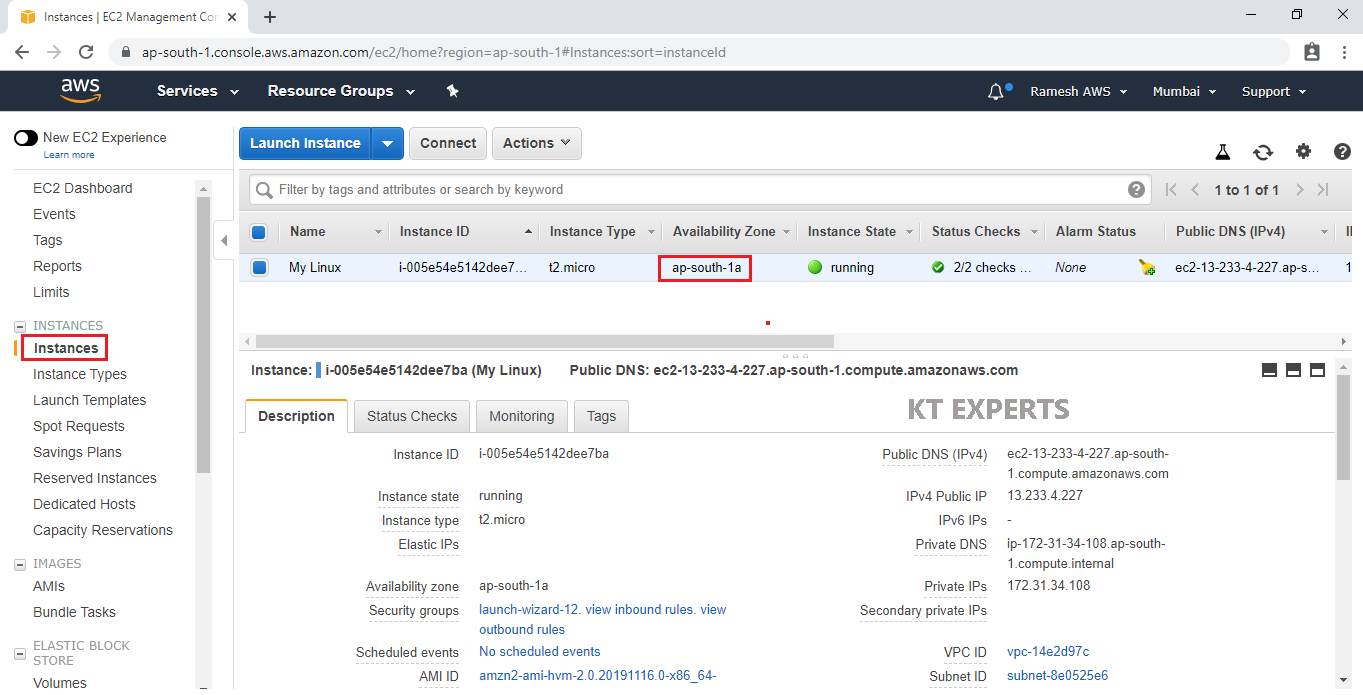
Go to Snapshots,
Select your created snapshot and click on Create Volume in the Actions.
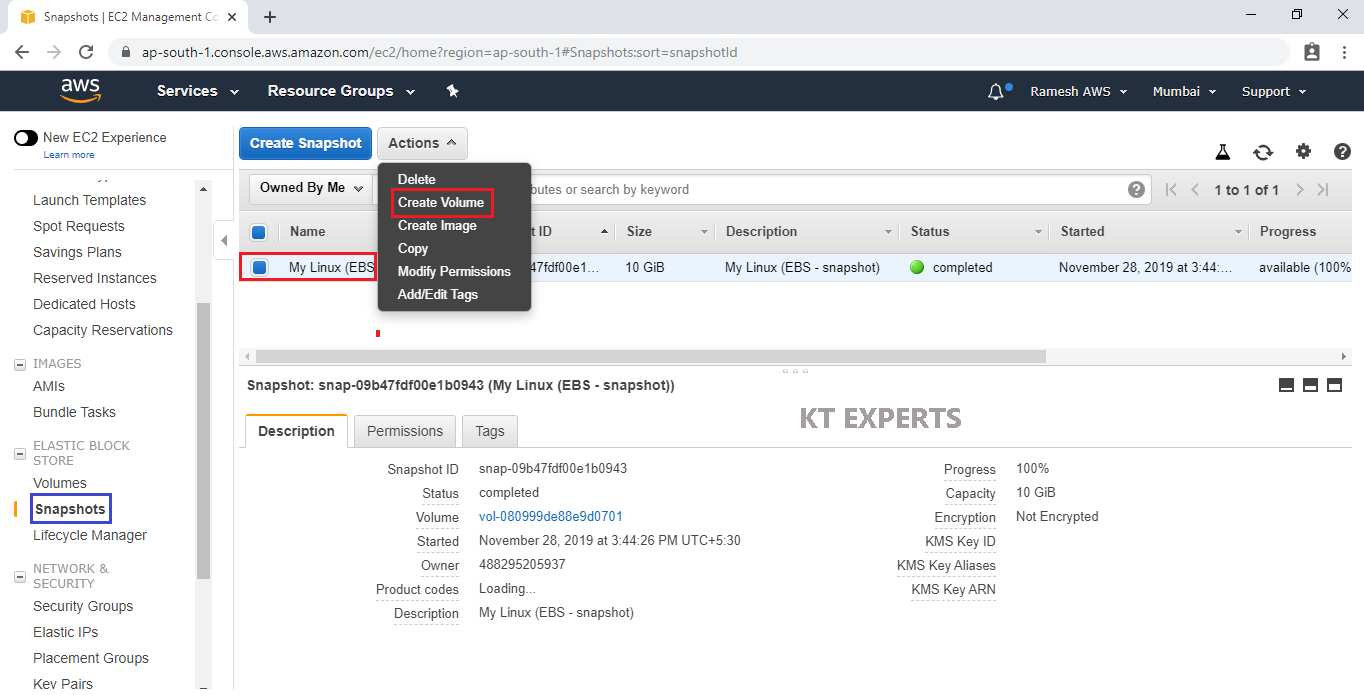
Specify Availability Zone “Ap-South-1a” and value “My Linux (EBS – From Snapshot) then click on Create Volume.
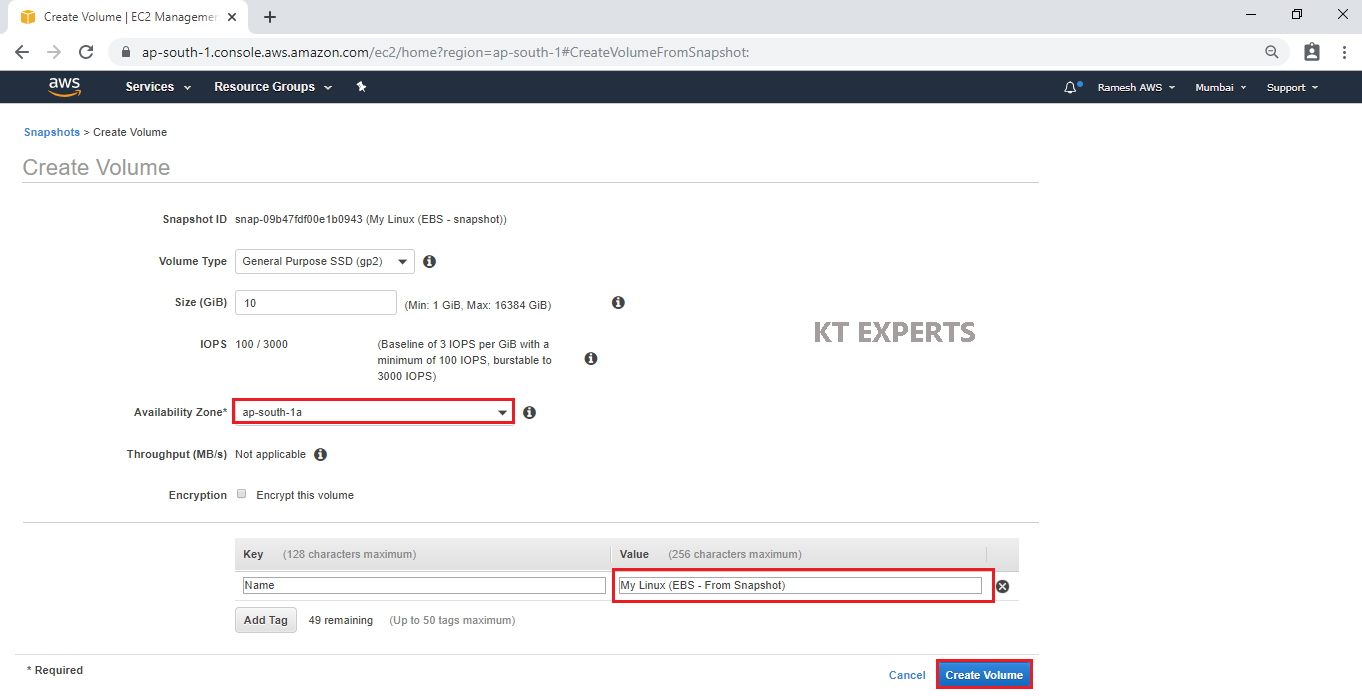
We can see Create Volume Succeeded and click on Close.

The volume has been created from snapshot.
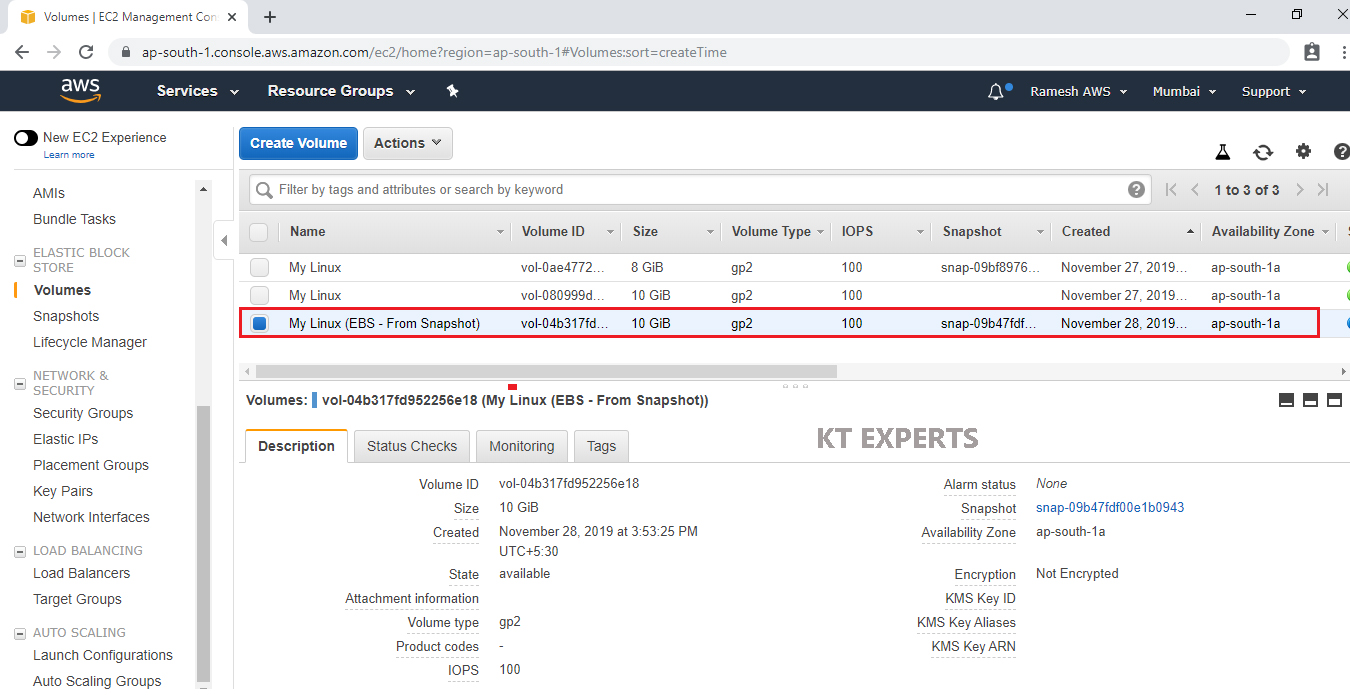
Launch Another Linux EC2 Instance
Please check below link to Launch Linux Server.
we can see EC2 Linux Instance “My Linux 1” which was created earlier.
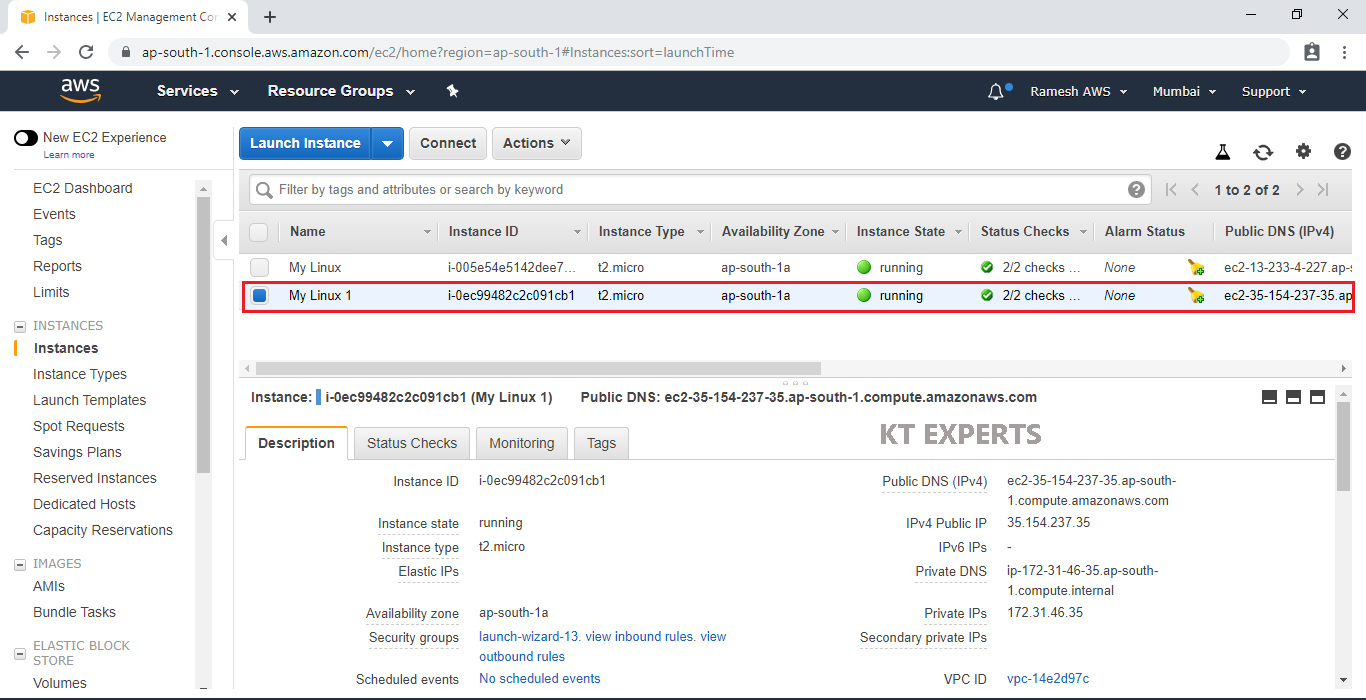
Verify volumes of your Linux Server.
Go volumes, we can see only one volumes attached to your Linux EC2 Volume.
It is the root volume.
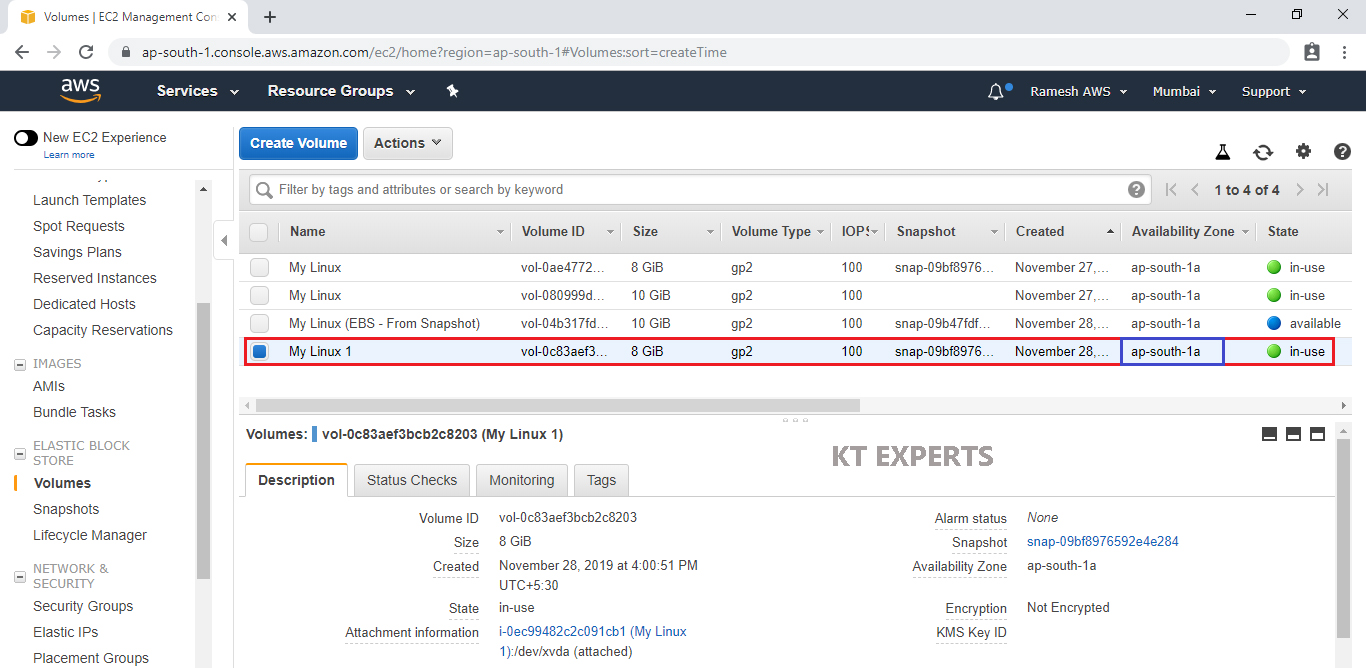
Attach EBS Volume to your Another Linux EC2 Instance “My Linux 1”
Select your EBS Volume and click on Attach Volume in the Actions.
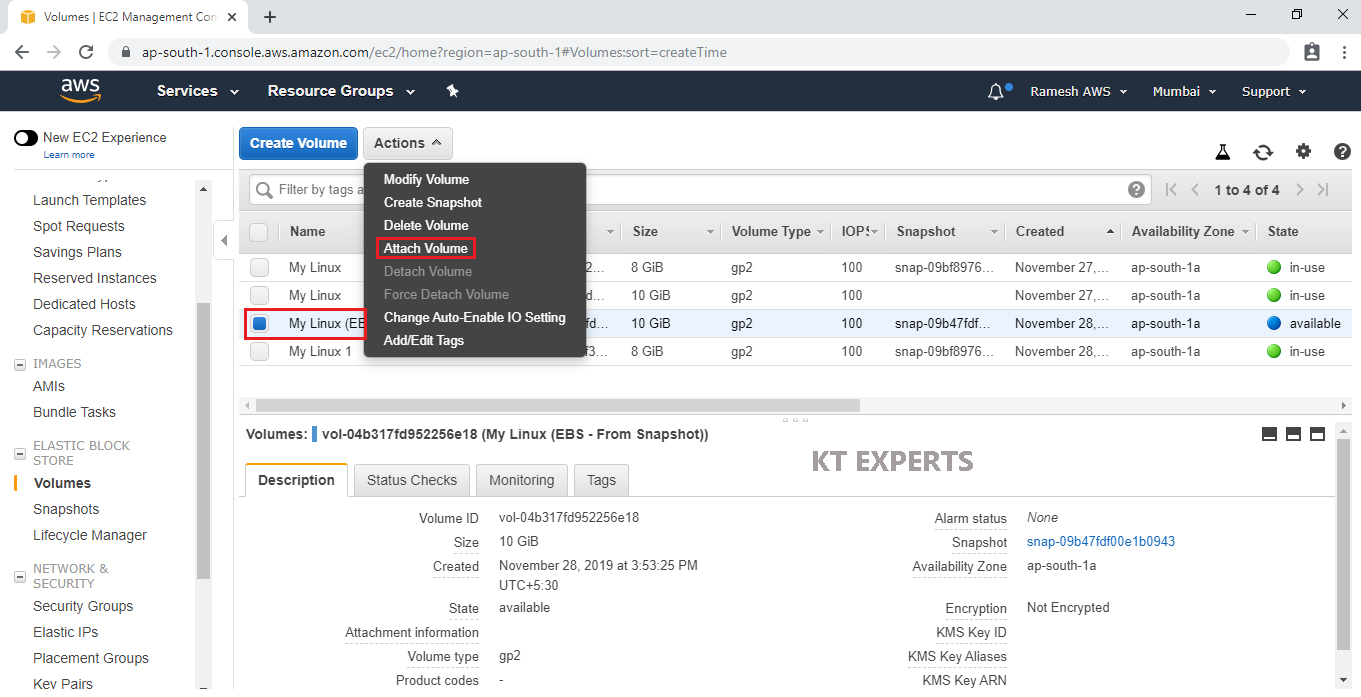
Select your required Linux EC2 Instance.

Click on Attach.
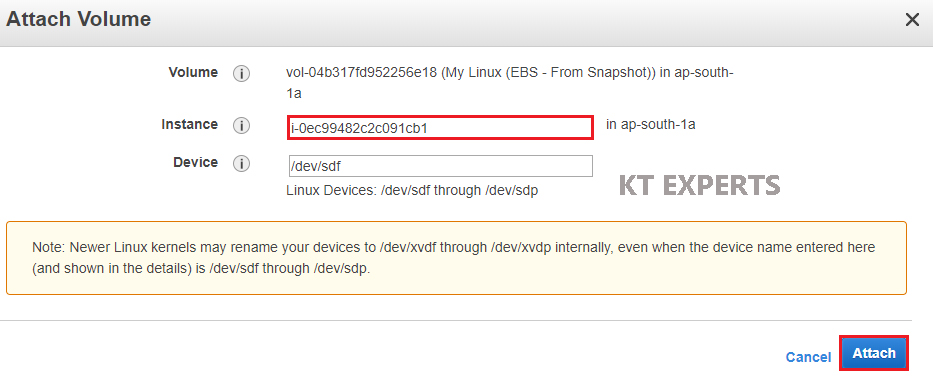
The EBS Volume has been attached to Second Linux EC2 Instance successfully.
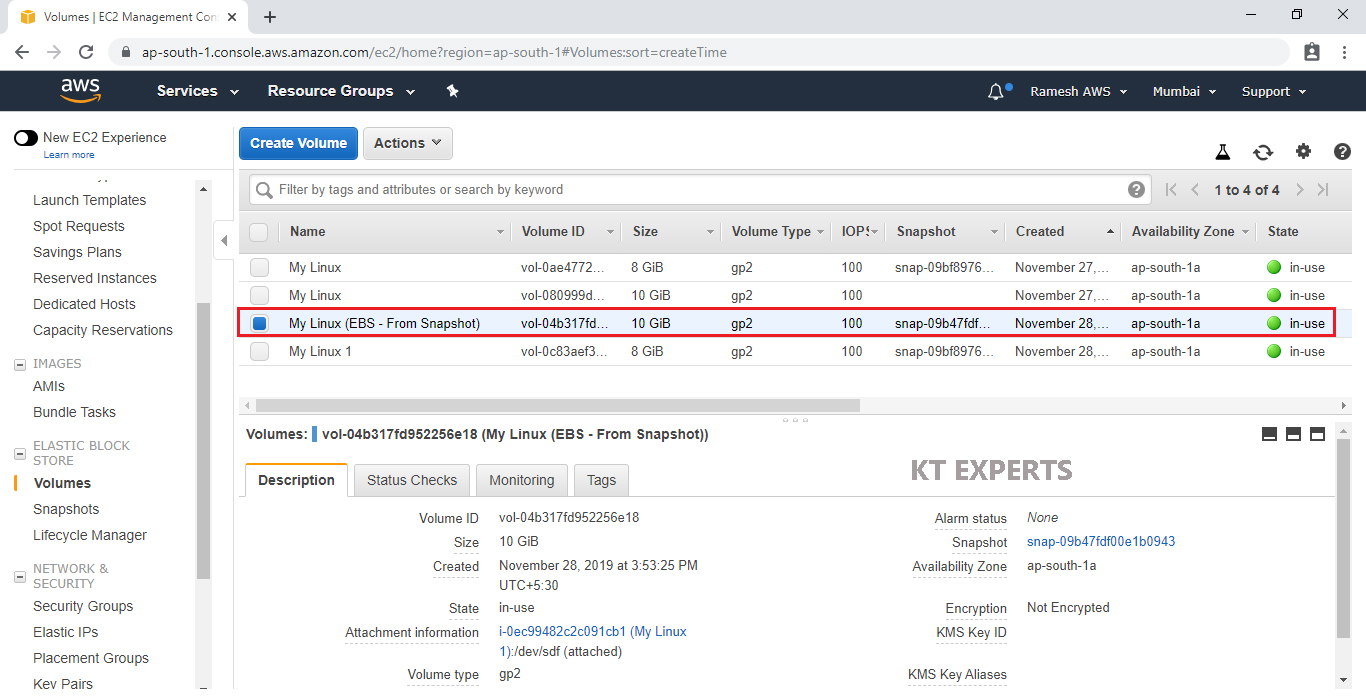
Connect to Second Linux EC2 Instance through putty and verify files
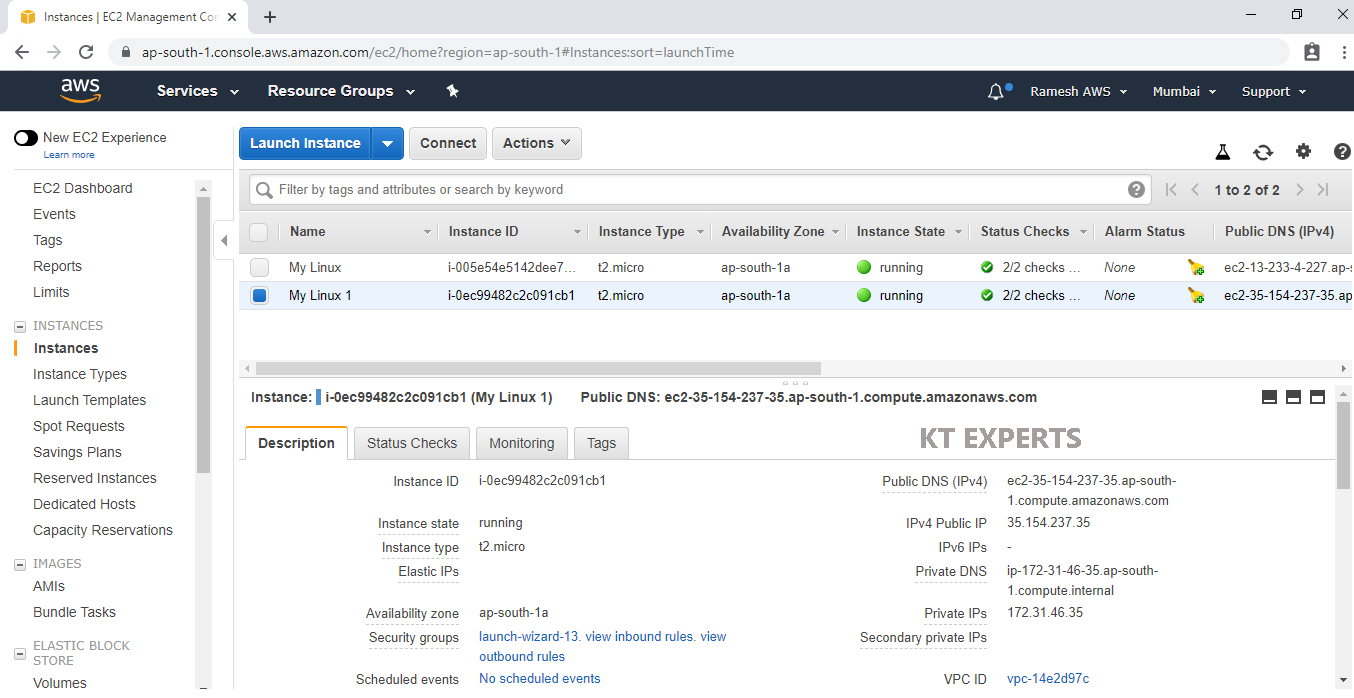
Open Linux Terminal.

Switch to root user
Verify Available disks in your Linux Server
Verify the disk space in you Linux Instance
Verify the volume has any data by using the following command.
Create a directory to mount our new ext4 volume (use any directory name you like)
Make Directory
Mount the volume to “ktexperts” directory
Verify the disk space in you Linux Instance
Go to Mount Directory and verify files.
EBS Automount on Reboot
By default on every reboot the EBS volumes other than root volume will get unmounted.
To enable automount, you need to make an entry in the /etc/fstab file
Execute the following command to check id the fstab file has any error
Thank you for giving your valuable time to read the above information. Please click here to subscribe for further updates
KTEXPERTS is always active on below social media platforms.
Facebook : https://www.facebook.com/ktexperts/
LinkedIn : https://www.linkedin.com/company/ktexperts/
Twitter : https://twitter.com/ktexpertsadmin
YouTube : https://www.youtube.com/c/ktexperts
Instagram : https://www.instagram.com/knowledgesharingplatform


